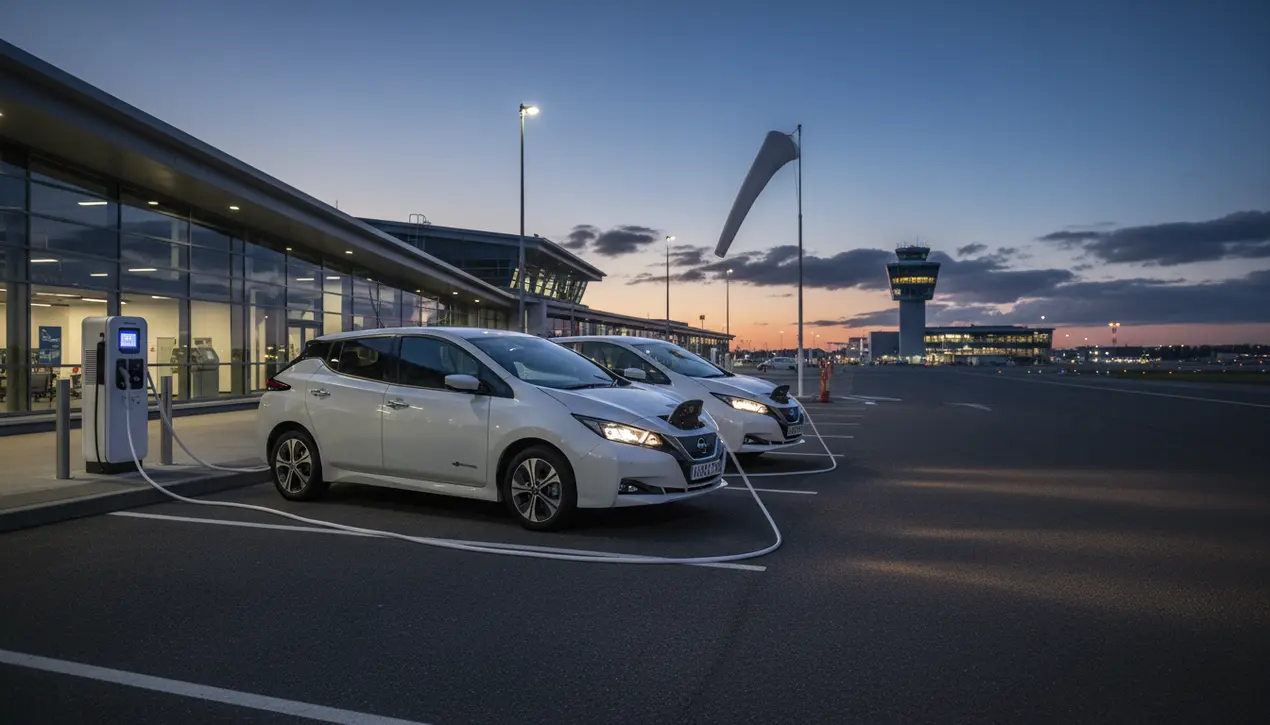
Otherauto & mobilityElectric Vehicles
Nissan Leafs Power Up: How Two EVs Are Fortifying a Regional Airport's Grid
TH
Thomas Green
2 hours ago7 min read
Beyond the headlines dominated by massive electric trucks and buses, a more subtle energy revolution is underway at a regional airport, championed by an unassuming workhorse: the Nissan Leaf. This initiative is a powerful case study in distributed energy, demonstrating that grid resilience may be forged not from monolithic power plants, but from the collective capacity of our everyday electric vehicles.The operational principle is both brilliant and straightforward. Two Nissan Leafs, when parked and connected to bi-directional chargers, cease to be just cars and become dynamic, mobile power units.During periods of peak electricity demand—when grid stress escalates and costs spike—the airport can tap into the vehicles' batteries, using them as a silent, emission-free backup power source. This directly addresses a critical weakness for airports, which function as essential hubs for commerce and emergency services and require unwavering power reliability.It’s more accurate to view these Leafs not as cars powering a terminal, but as highly sophisticated, portable battery packs that happen to have wheels. The selection of the Nissan Leaf is a strategic masterstroke.As one of the world's most common and accessible EVs, its success here opens the door to staggering scalability. The vision expands from two cars at a single airport to a future with millions of vehicles forming a vast, decentralized 'energy internet,' where a daily commute doubles as a contribution to national grid stability.This is pragmatic innovation that echoes a broader sustainable vision—taking proven, existing technology and applying it to solve foundational challenges on Earth. Admittedly, the journey to mass adoption faces hurdles, including the need for standardized bi-directional charging technology, navigating utility regulations, and alleviating consumer concerns about battery wear.However, emerging research indicates that intelligently managed V2G services have a negligible impact on battery longevity, especially when compared to the degradation caused by routine driving and frequent fast-charging. More than a simple pilot program, this airport project serves as a guiding light.It proves that resilience isn't solely about building stronger fortifications, but about weaving smarter, more responsive networks. It’s a grounded application with extraordinary potential, showing that some of our most powerful energy solutions are already parked and waiting.
#featured
#Nissan Leaf
#V2G
#airport resilience
#electric vehicles
#energy storage
#vehicle-to-grid
Stay Informed. Act Smarter.
Get weekly highlights, major headlines, and expert insights — then put your knowledge to work in our live prediction markets.
Comments
Loading comments...
© 2025 Outpoll Service LTD. All rights reserved.